Menus
- Think about perfectly normal customers
- Old and new still have something in common?
- Honda CB 500 F made much more filigree
- Velvety-soft engine and sporty attitude
- Uncomplicated and stable up to high speeds
- Technical specifications
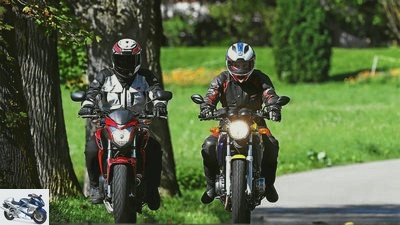
Jahn
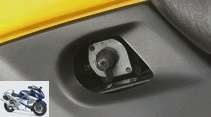

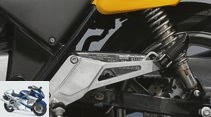

52 photos
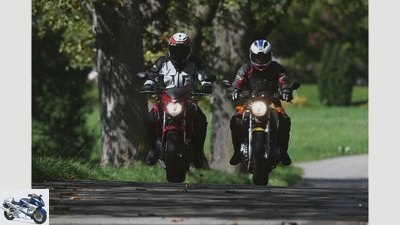
1/52
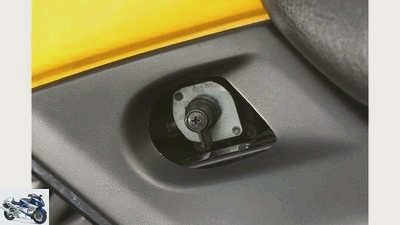
2/52
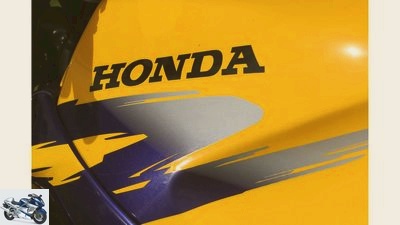
3/52
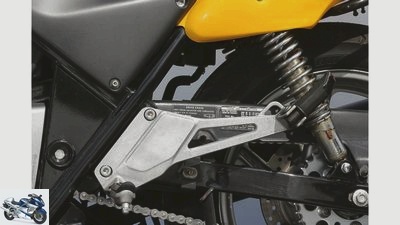
4/52
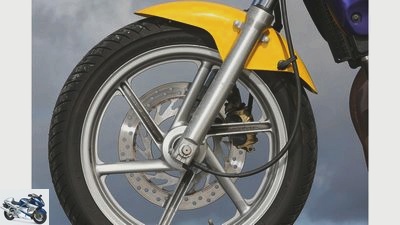
5/52
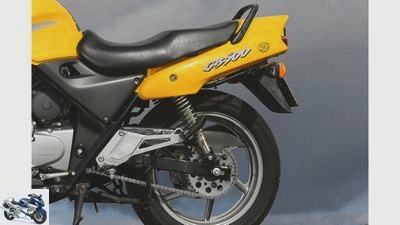
6/52
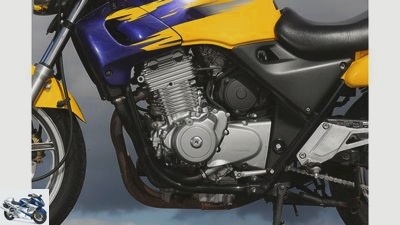
7/52
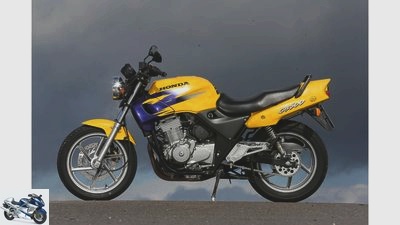
8/52
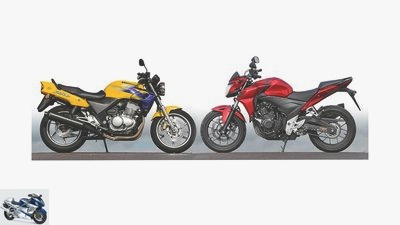
9/52

10/52
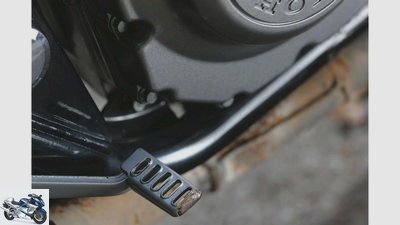
11/52
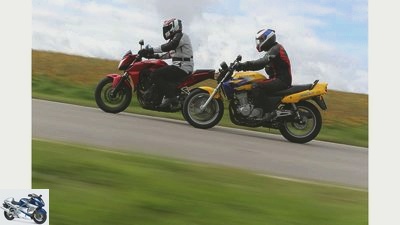
12/52
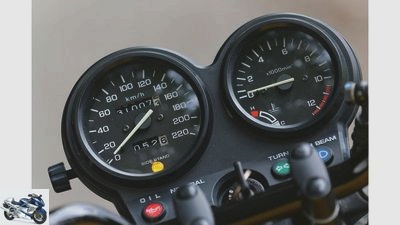
13/52
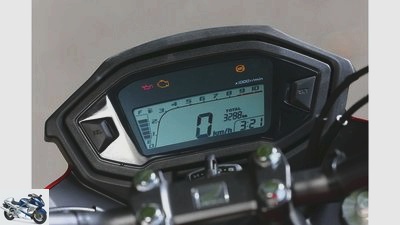
14/52
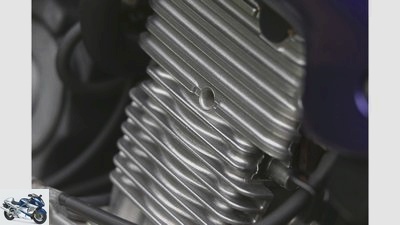
15/52
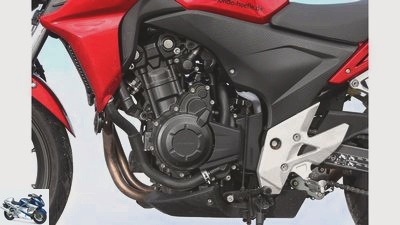
16/52

17/52

18/52
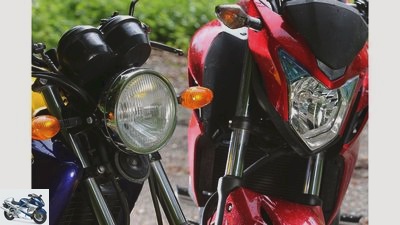
19/52

20/52
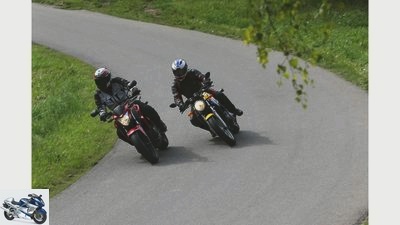
21/52
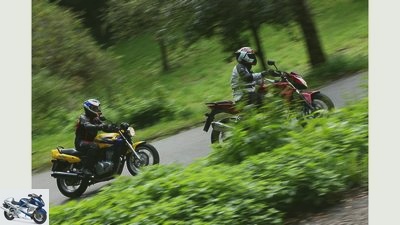
22/52
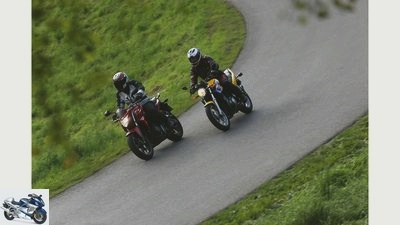
23/52
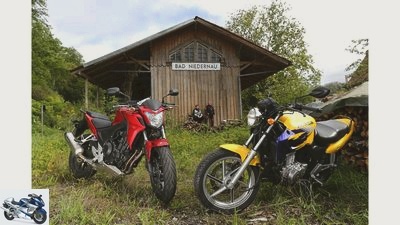
24/52
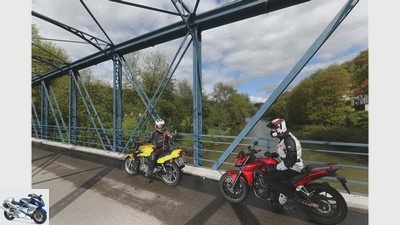
25/52
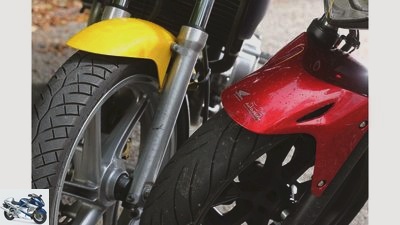
26/52
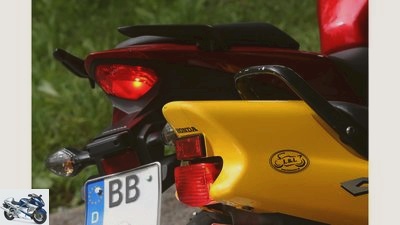
27/52
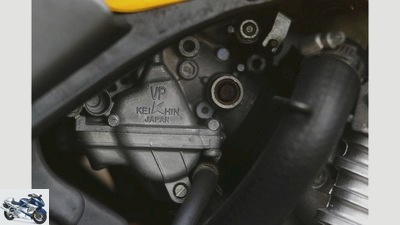
28/52
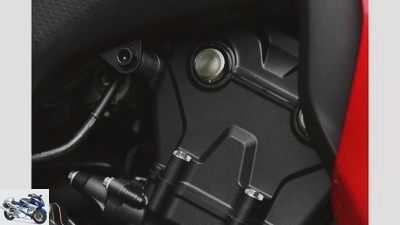
29/52
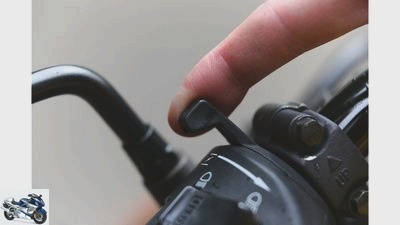
30/52
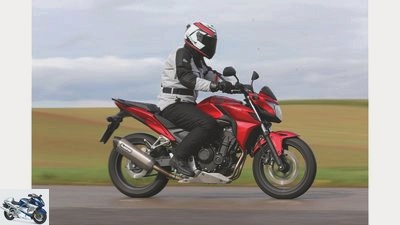
31/52

32/52

33/52
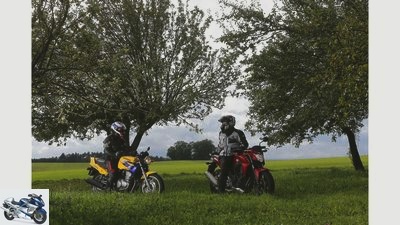
34/52

35/52
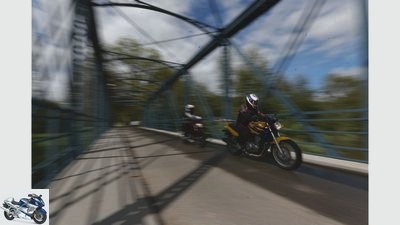
36/52
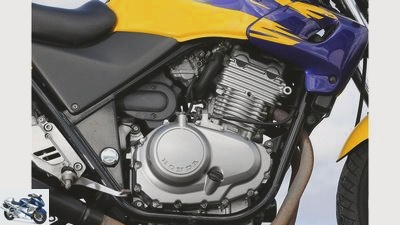
37/52
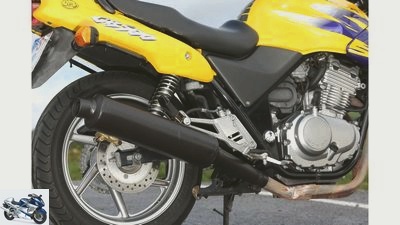
38/52
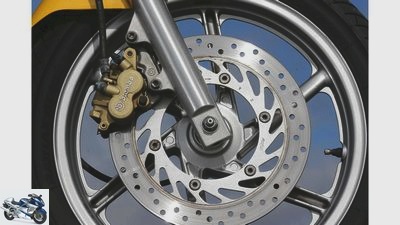
39/52
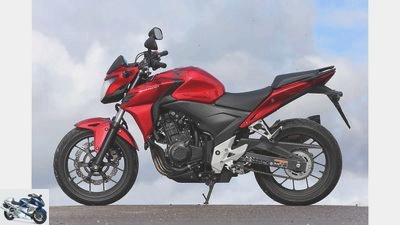
40/52
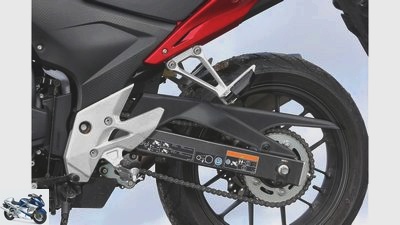
41/52
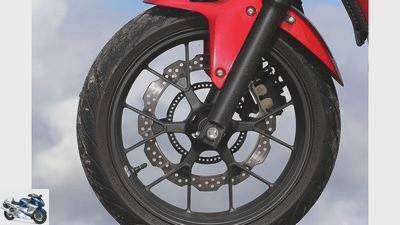
42/52
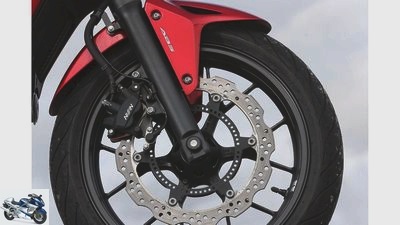
43/52
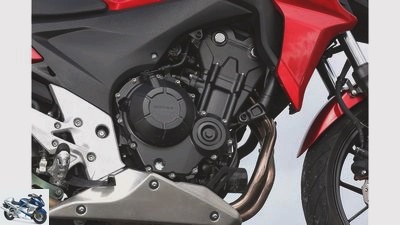
44/52
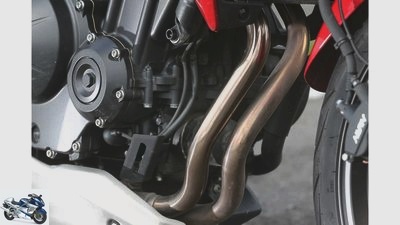
45/52
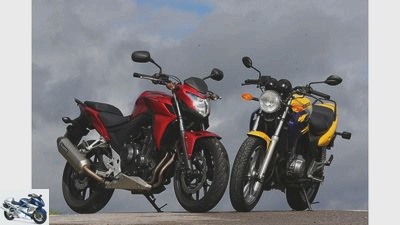
46/52

47/52
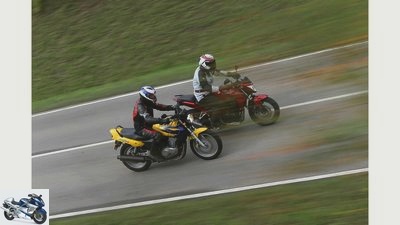
48/52
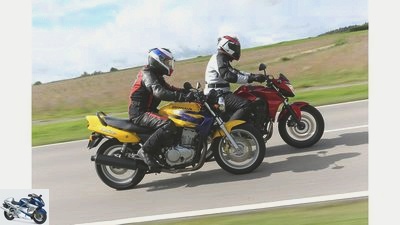
49/52
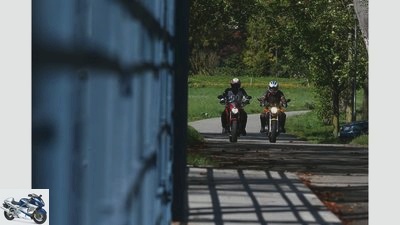
50/52
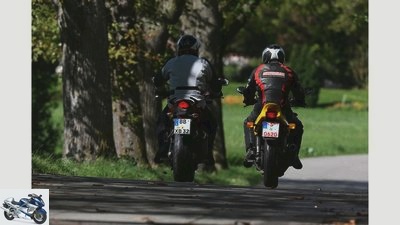
51/52

52/52
Honda CB 500 and CB 500 F in comparison
Think about perfectly normal customers
Extravagant, pompous, brutal? None of these attributes that an all-rounder like the Honda CB 500 would have to adorn with. She is more of a reliable partner for everyday life. Sounds boring? Are you kidding me? Are you serious when you say that! Old and new on a tour through autumn together.
Driving school machine, entry-level slicer, bread-and-butter bike – the Honda C.B 500 has had to listen to a lot in the course of its career. Amazing, because within a very short time it became a bestseller. As an economical, reliable and affordable bike, it was vastly superior to its reputation.
Buy complete article

Honda CB 500 and CB 500 F in comparison
Think about perfectly normal customers
CB 500 F sells like sliced bread
The new Honda CB 500 F is not doing much better in this regard. Anyone who buys the lively two-cylinder will hardly get any appreciative pat on the back from their buddies. And yet: it also sells like sliced bread in its first season. History, it seems, is beginning to repeat itself.
The year is 1993: the first Honda CB 500 with an in-line twin cylinder sees the streets of the world. With this model, the manufacturer wants to expand its product range in addition to high-priced first-class technology machines such as the Honda VFR 750 R to include simple, rock-solid motorcycles for an average-income clientele. At this point in time, Suzuki already had the GS 500 E in its range. The first edition of the Honda should cost only 8990 marks – a real competitive price!
20 years later: Honda presents a new edition of the Ahnin, which was produced until 2002. At 5490 euros cheaper than any other Japanese bike in this class, the new Honda CB 500 F with ABS, a well-equipped on-board computer and a brand-new in-line twin cylinder is being launched. It should also be suitable for everyday use and inexpensive. Not for the high-end lover, but for everyone who wants to commute to work reliably, safely and fuel-efficiently or who want to go on a weekend trip to the Weser Uplands.
Old and new still have something in common?
So one thing has remained the same over the years: the direction of the Honda CB 500. In other words, in 2013 Honda will return to its normal customers. But do the old and new models still have something in common?
Extravagant, pompous, brutal? None of these attributes that an all-rounder like the Honda CB 500 would have to adorn with.
Absolutely! A first look at the key data reveals the close relationship between the two bikes. But both may fall back on a similar gene pool, on closer inspection, the generation difference is clearly visible. The 499 cubic centimeter large engine of the original CB, for example, pampers the beholder’s eye with fine cooling fins, which it has been given to improve heat dissipation despite water cooling. As a driver of the Honda CB 500 F one quickly becomes jealous.
With its smooth and no-frills surfaces, the new twin, which is slightly smaller at 471 cubic meters, doesn’t really turn on. If you then consider – regardless of the level of driving license – that the top performance of the old unit with 58 HP is even 10 HP higher than that of the new Honda CB 500 F, you are right to ask yourself: where is the progress here?
Honda CB 500 F made much more filigree
In terms of optics, it is visible, logical. While the old Honda CB 500 is dominated by round shapes (headlights, instruments, tank, pillion handle), the current model is rather angular. This not only looks more modern, but also embodies self-confidence and personality. In general, the Honda CB 500 F is much more filigree. Be it the tail tapering towards the taillight or the sleek radiator cowling – unlike its sister, nothing looks puffy here. Enough looked. Off to the mopeds!
Two decades of difference in motorcycle development also mean different starting procedures. With the new Honda CB 500 F, all you have to do is turn the key and press the starter button to start the engine. With the old one, you first have to open the petrol tap and operate the choke on the left end of the handlebar. In times of injection and automatic idling, there is something original, almost nostalgic about it. Despite single-digit temperatures and high humidity, the carburetor model starts perfectly. It sounds a bit more robust than the youngster next door, but neither are real sound specialists.
Velvety-soft engine and sporty attitude
In keeping with their reputation, they step on the gas without complaint, showing after a few meters how differently a twin can be interpreted 20 years later. The engine of the new Honda CB 500 F runs smoothly and grabs a lot from 2000 rpm thanks to the short gear ratio.
Potent, powerful and with a sporty attitude, the twin snaps off.
Apart from a slight kick at 5500 tours, the counter-runner happily toiled his way up the speed ladder with linear power development and only developed fine-nerved vibrations in the upper third. You step from gear to gear almost silently and quickly reach the sixth gear ratio.
For the promised 48 hp, the unit works really well, is lively and extremely cultivated in every situation. In comparison, the old model, which was no longer made in Japan in 1996, but in Italy (including levers and brakes from then on came from Europe), plays the character actor. Although the engine just as naturally pushes off from low engine speeds, it vibrates much more powerfully despite the balance shaft. With less revving and pressure, the twin finally trudges a little cautiously up to 6500 revolutions in order to let it really crack from then on: The two-cylinder then snaps off potent, powerful and with a sporty attitude, pushing the load forward quickly with a fat punch in order to be caught by the limiter only after 10,000 trips.
Uncomplicated and stable up to high speeds
The promised 58 hp is still popular today in the Honda CB 500, but you can’t help wondering how such a motorcycle could ever be labeled a bore. Was it the driving behavior? In the end, it was certified as being easy to drive, accurate and stable. So nothing for the tough dogs of the 90s. The old CB 500 is still uncomplicated by today’s standards. The double loop construction made of steel can be driven into bends reliably and stably, but not extremely handy. Indeed: It is not exciting, it is always fleeting.
Is the new one just as uncomplicated? Yes, and more than that. As easily and playfully as the Honda CB 500 F can be controlled, it marks the new spearhead in a family duel and plays at least one league higher than its predecessor. This is how a modern motorcycle has to drive: accurate, handy and stable up to high speeds. Every biker can cope with this. Sure, maybe both mopeds may be simple. But who cares? Because they do what a solid motorcycle must be able to do: be a reliable partner for everyday life. And that at an unbeatable price. The representatives of the small everyday bikes are thus entering a new generation. OK then.
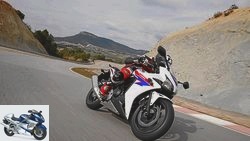
Naked bike
Driving report Honda CBR 500 R / CB 500 F
No half things
read more
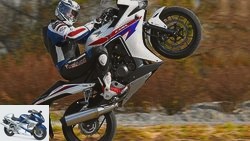
Naked bike
Honda CBR 500 R and CB 500 F
Two "R.", Full fairing and 48 hp
read more
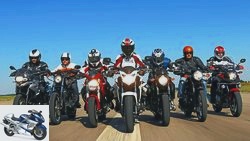
Enduro
Honda CB 500 F, Ducati Monster, Suzuki Gladius, Harley 883 R, Kawasaki W 800, BMW F 700 GS, Honda NC 700 X
Seven 48 hp twins in a comparison test
read more

motorcycles
Alpenmasters 2013: 48 HP motorcycles
48 HP bikes in comparison at the 2013 Alpenmasters
read more
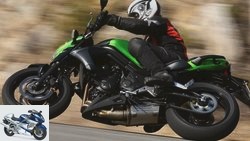
motorcycles
Nine 48 hp motorcycles put to the test
Motorcycles and scooters for driving license class A2
read more
Technical specifications
A comparison of old and new.
Honda CB 500 (1998)
Type of engine Water-cooled two-cylinder four-stroke in-line engine. A balance shaft, four valves per cylinder, operated by two overhead camshafts and bucket tappets, electric starter
Mixture preparation Constant pressure carburetor, Ø 34 mm
coupling Multi-disc oil bath clutch
transmission Six-speed
Secondary drive O-ring chain
Bore x stroke 73.0 x 59.6 mm
Displacement 499 cm3
compression 10.5: 1
power 43.0 kW (58 hp) at 9500 rpm
Torque 47 Nm at 8000 rpm
Weight with a full tank 195 kg
Top speed 180 km / h
Price including additional costs 8960 marks
Honda CB 500 F (2013)
Type of engine Water-cooled two-cylinder four-stroke in-line engine. Four valves per cylinder, operated by two overhead camshafts and bucket tappets.
Mixture preparation Injection, Ø 34
coupling Multi-disc oil bath clutch
transmission Six-speed
Secondary drive O-ring chain
Bore x stroke 67.0 x 66.8 mm
Displacement 471 cm3
compression 10.7: 1
power 35.0 kW (48 hp) at 8500 rpm
Torque 43 Nm at 7000 rpm
Weight with a full tank 193 kg
Top speed 175 km / h
Price including additional costs 5490 euros
Related articles
-
Honda CB 750 Four, Munch-4 1200 TTS, MV Agusta 750 S.
Jahn 33 pictures Jahn 1/33 There was no more engine: With its transversely installed four-cylinder in-line engine, the Honda CB 750 was a sensation in 1969. Just…
-
V4 motorcycles: Honda VFR 750 F and Honda 1200 F
Gargolov VFR 750 F and 1200 F in comparison Honda’s V4 machines Sport and Touring have been bringing Honda’s VFRs under one roof for a quarter of a century …
-
fact 12 pictures fact 1/12 Top brakes: radially screwed six-piston stoppers, ABS and integral actuation. fact 2/12 Builds compact and very narrow: the …
-
Honda NC 700 S and Yamaha XJ6 ABS in the test
17 pictures 1/17 Honda NC 700 S and Yamaha XJ6 ABS in a 48 HP comparison test. 2/17 Honda NC 700 S and Yamaha XJ6 ABS …
-
48 hp BMW G 650 GS and Honda NC 750 X motorcycles in the test
fact 30th photos fact 1/30 fact 2/30 Refueling, the first: placed low, easy to fill even on the side stand – the rear tank certainly has its charms. fact…
-
On the move with Honda CB 1100 F and Kawasaki GPZ 1100 B2
www.factstudio.de 29 pictures factstudio.de 1/29 picture gallery: Honda CB 1100 F and Kawasaki GPZ 1100 B2 on the move. factstudio.de 2/29 Honda CB 1100 F and …
-
Honda CRF 1100 L Africa Twin (2020) in the driving report
Motorcycle fair in Milan EICMA 2019 Presented by Honda 14 pictures Honda 1/14 The basic model Honda CRF 1100 L Africa Twin comes exclusively with the …
-
Driving report Honda CRF 1000 L Africa Twin (part 1)
Honda 13 photos ULA SERRA PRATS 1/13 Honda Africa Twin. 2/13 270 degree crank pin offset, long, continuous shaft with two balance weights in front of the…
-
Honda Africa Twin in the top test
markus-jahn.com 21st photos markus-jahn.com 1/21 The first impressions of the Honda Africa Twin when it was presented were promising. But now it applies….
-
Krieger 12 pictures Sven Krieger 1/12 cult bike Honda CB 450.Sven Krieger 2/12 Among the descendants: machines like the CB 500 (left) have long been part of the …